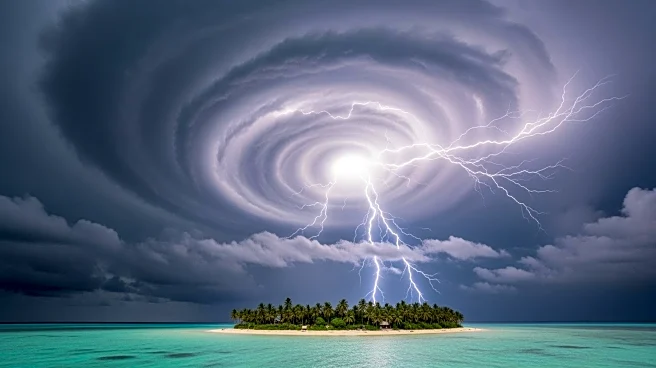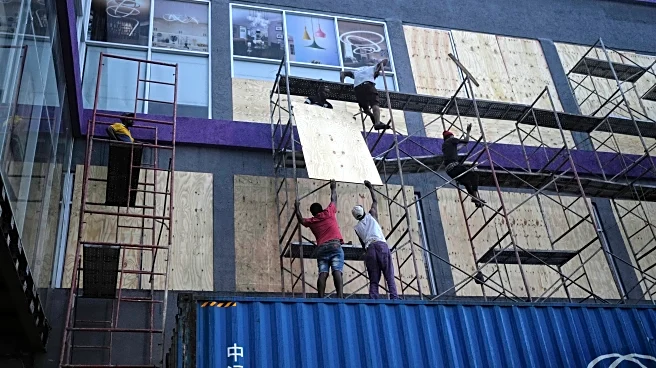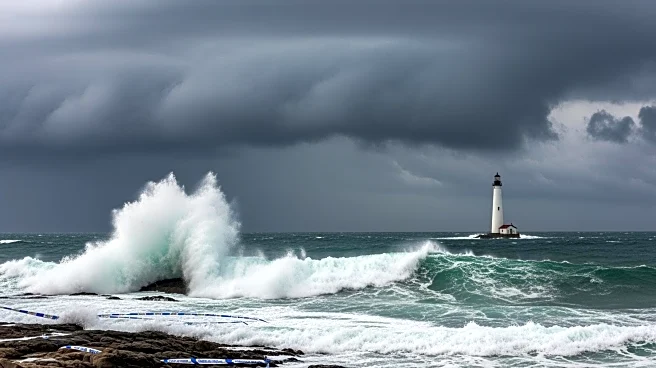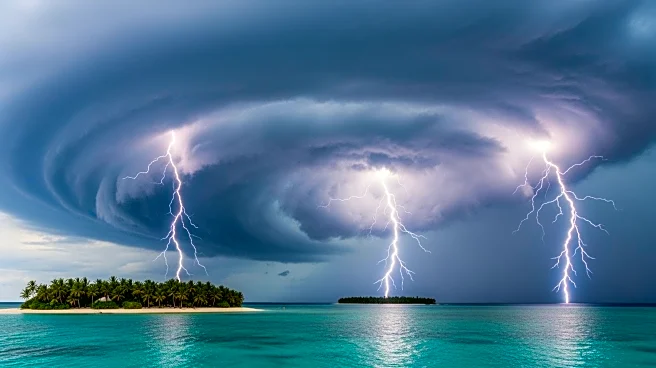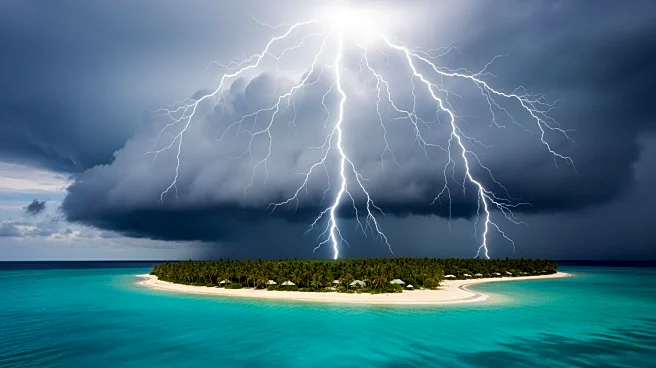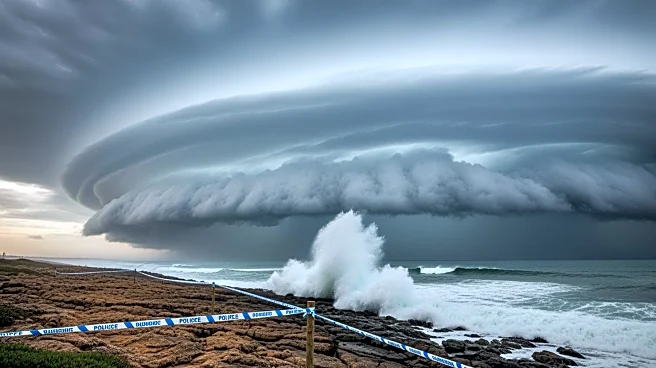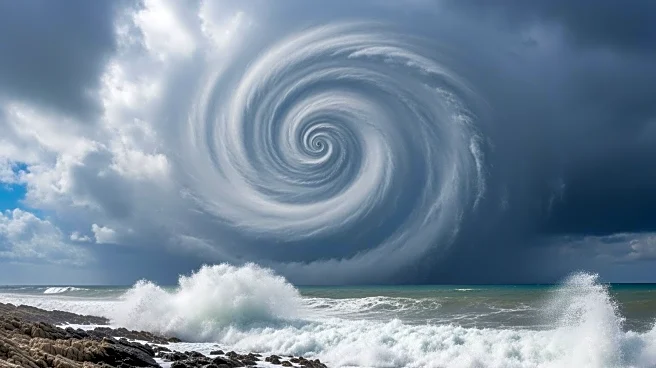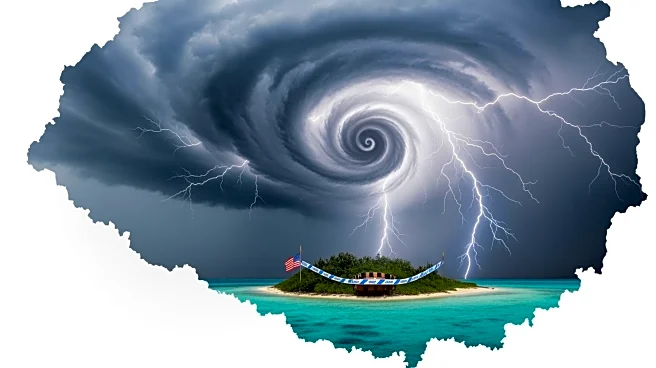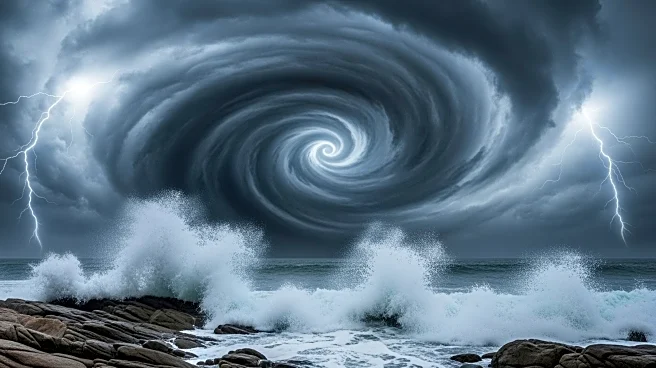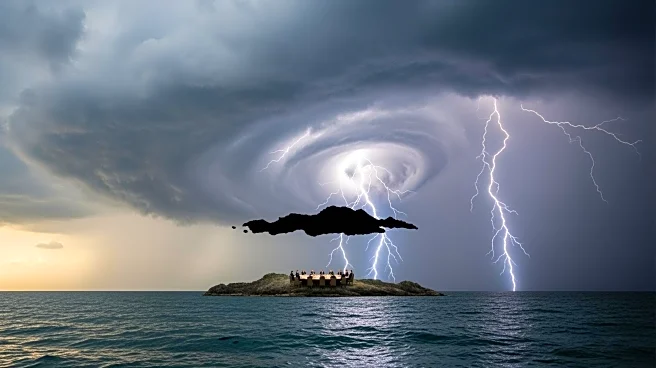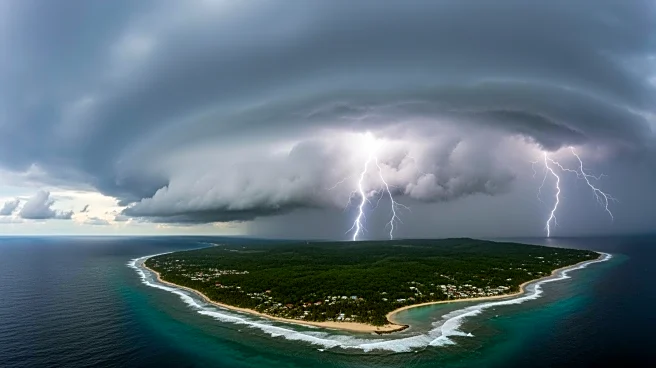What's Happening?
Hurricane Melissa, a Category 5 storm, is nearing Jamaica with winds reaching 175 miles per hour. The storm is predicted to be the strongest in the island's recorded history, bringing life-threatening
flooding and a devastating storm surge. Authorities have ordered over a million people to evacuate, and many airports and schools have been closed. The hurricane's slow movement across the Caribbean is expected to result in significant rainfall, measured in feet rather than inches.
Why It's Important?
The potential impact of Hurricane Melissa on Jamaica could be catastrophic, with the storm threatening to cause unprecedented damage. The evacuation of over a million people highlights the severity of the threat. The storm's intensity and slow movement could lead to prolonged flooding and infrastructure damage, posing significant challenges for recovery and relief efforts. The situation underscores the vulnerability of Caribbean nations to extreme weather events, which are becoming more frequent and severe.
What's Next?
As Hurricane Melissa approaches Jamaica, emergency services and international aid organizations are likely to be mobilized to provide assistance. The storm is expected to continue its path towards Cuba and the Bahamas, with potential impacts on these regions. The focus will be on ensuring the safety of residents and minimizing damage, while preparing for long-term recovery efforts.
Beyond the Headlines
The intensification of Hurricane Melissa raises concerns about the impact of climate change on weather patterns, with warmer ocean temperatures contributing to more powerful storms. The situation highlights the need for improved disaster preparedness and infrastructure resilience in vulnerable regions. The potential economic and humanitarian impact of the storm could prompt discussions on international support and climate adaptation strategies.
